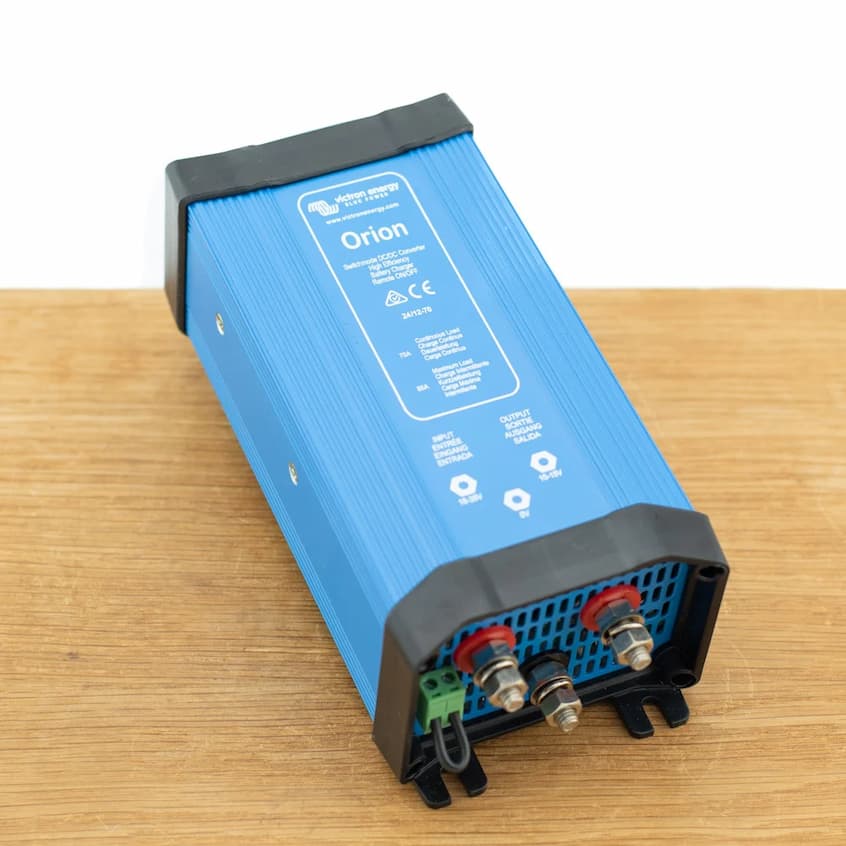
Powering Seamlessly: A Complete Guide to DC-DC Converters
In today’s world, efficient power management is essential across numerous energy systems, from solar arrays and recreational vehicles to off-grid and mobile power solutions. Reliable, stable power delivery enhances performance, safeguards electronics, and extends the lifespan of batteries. To achieve this, converting power between different voltage levels using specialised devices is crucial. One of the essential components fulfilling this role is the DC to DC converter, an often-overlooked hero in energy systems that demand consistent power regulation.
Understanding the Role of a DC to DC Converter

A DC to DC converter is an electronic device designed to transform a source of direct current (DC) from one voltage level to another. This transformation allows electrical equipment to operate optimally despite fluctuations in power supply voltage. By adjusting the input voltage up or down, these converters ensure sensitive components receive a steady, suitable voltage, preventing damage and maintaining efficient operation.
The presence of a DC to DC converter in systems such as solar power installations, electric vehicles, or portable battery packs is critical for protecting devices and enhancing energy efficiency. So, that is exactly why you should invest in a reliable DC-DC converter: it improves system efficiency and operational safety, and requires less maintenance over time.
What are the Applications of a DC-DC Converter?
Applications range widely, from regulating power in renewable energy systems, like solar arrays and battery banks, to supporting automotive and marine electronics with stable voltages regardless of engine speed or battery state. Choosing the appropriate type affects system reliability, making it essential to understand the specific power requirements of your setup.
And speaking of, there are a few types of DC-DC converters tailored to meet varying power management needs. These include:
- Step-down converters: These reduce the voltage to a lower level suitable for smaller devices.
- Step-up converters: These work in the opposite way, increasing voltage when needed.
- Some even support bidirectional power flow, enabling charging and discharging in more complex systems.
How to Choose the Best DC to DC Converter for Your Setup
Selecting a converter requires careful consideration of a few factors:
- Input and output voltage ranges
- Current capacity
- Efficiency ratings
- Physical dimensions
Ensuring the converter maintains efficiency across its operating range is crucial, as power losses generate heat and shorten battery life. Durability and protection features, such as overload, short-circuit, and thermal protection, enhance safety during operation.
Compatibility with the system’s voltage and current demands ensures smooth integration. Reliability also depends on quality manufacturing standards and materials that provide heat resistance and mechanical robustness. Understanding these factors helps you choose a converter that supports your system’s longevity and performance goals.
Features That Dictate Quality

High-quality converters often come with features designed to boost energy efficiency and safeguard connected equipment. Effective thermal management, through heat sinks or cooling designs, lowers the risk of overheating during continuous use.
Overload and short-circuit protections prevent damage during unexpected electrical faults. Stable output voltage regulation is essential for sensitive electronics that require consistent power. Advanced converters include EMI (electromagnetic interference) suppression to minimise noise that could disrupt other devices.
Installation, Maintenance, and Efficiency Tips
Proper installation is as important as choosing the right converter, as well as getting the most out of it. Here are some tips:
- Position the device in well-ventilated spaces. This prevents heat accumulation, and also securely mounting it reduces vibration damage in mobile or outdoor settings.
- Regular cleaning and inspection for wear or corrosion. This promotes stable performance.
- Avoid installing near high-heat sources or strong electromagnetic fields. Helps to maintain signal integrity.
- Periodically, do maintenance, such as dust removal and checking electrical connections. Prevents any malfunctions and extends service life.
- Familiarise yourself with wiring diagrams and datasheets to ensure correct voltage and polarity connections, since miswiring can cause irreversible damage.
Reviewing Similar Gadgets and Alts
Beyond these, complementary power management gadgets exist within the same timeline, such as:
- Solar charge controllers (regulate voltage and current, from solar panels to batteries)
- Inverters (convert DC to AC for household appliances)
Understanding how these systems interlink helps in designing power setups that suit specific needs, ranging from small portable devices all the way to off-grid installations. A balanced system utilising the right blend of these components provides versatility and resilience for many power-dependent activities.
The Smart Choice for Power Management
Choosing the right DC to DC converter is a pivotal decision that influences the safety, reliability, and efficiency of your power system/supply. On the whole, these devices play a crucial role in adapting voltage levels to meet the needs of diverse applications, be it solar energy systems or automotive electronics.
Investing time in understanding specs, installations, and maintenance practices ensures your power setup operates smoothly and withstands the demands of daily use. And with the right equipment integrated, you can harness and manage power wherever your energy takes you.

